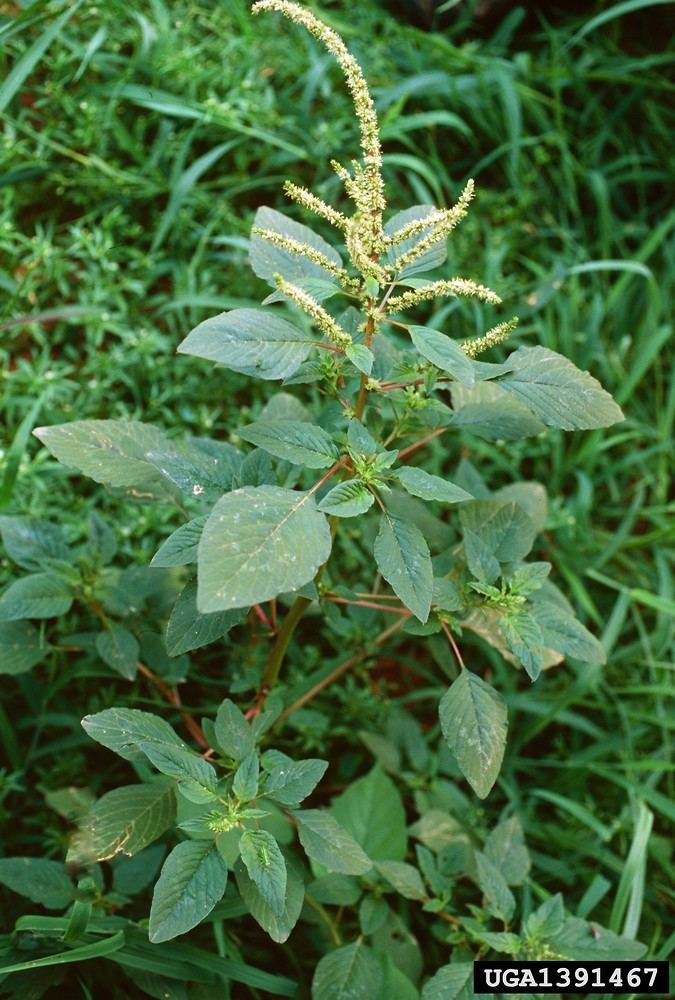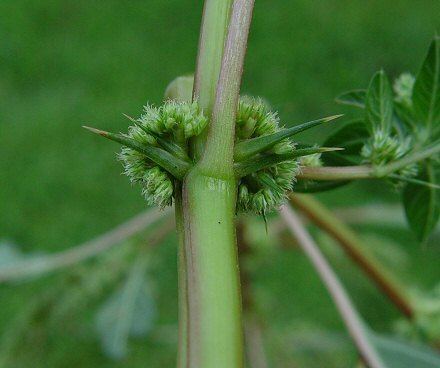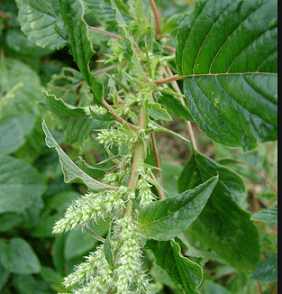Higher classification Amaranth | Genus Amaranthus Rank Species | |
 | ||
Similar Amaranth, Amaranthus viridis, Amaranthaceae, Amaranthus hybridus, Amaranthus dubius | ||
Amaranthus spinosus, commonly known as the spiny amaranth, spiny pigweed, prickly amaranth or thorny amaranth, is a plant is native to the tropical Americas, but is present on most continents as an introduced species and sometimes a noxious weed. It can be a serious weed of rice cultivation in Asia.
Contents

Dye use

In Khmer language, it is called pti banlar and in Vietnamese giền and its ash was historically used as a grey cloth dye.
Food use

Like several related species, A. spinosus is a valued food plant in Africa. It is valued also in Thai cuisine, where it is called phak khom (Thai: ผักขม). In Tamil, it is called mullik keerai. In Sanskrit, it is called tanduliyaka. It is used as food in the Philippines, where it is called kulitis. The leaves of this plant, known as massaagu in the Maldivian language, have been used in the diet of the Maldives for centuries in dishes such as mas huni. In Mexico, it is among the species labelled Quelite quintonil in Mexican markets.
Medicinal use

The leaves of this plant have been used as a poultice for the skin treatments, such as for pimples and burns. Water extracts from its roots and leaves have been used as a diuretic.


